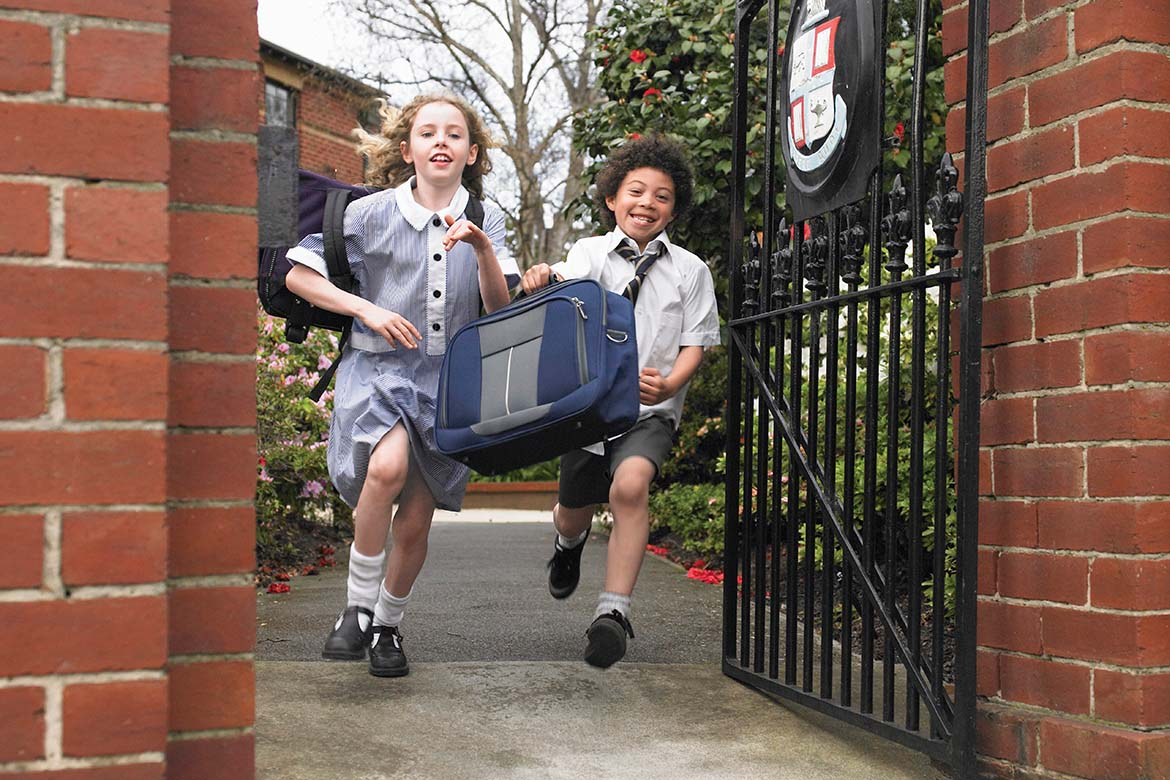Security in Schools
In an age of increased threats on school premises that not only affect the safety of pupils and staff, but also that of property and reputation, access control in schools is more essential than ever.
Threats to Security in Schools
In today’s world, schools can face a number of threats both inside and outside school hours, including arson, bomb threats, vandalism, intruders, attacks on children or staff, missing children and theft.
The average school has a transient population with many high value goods such as computers and IT equipment plus personal possessions of staff and students, as well as personal and financial data, all of which can be extremely attractive to thieves. If in the wrong hands, the loss of such equipment or data can be detrimental and can severely damage the reputation of a school.
Selecting Measures for Security in Schools
Taking into account these risks, it is important to choose security measures that will not only protect staff, students and assets, but that will integrate seamlessly with the design of a building.
Access control systems, as well as physical measures such as escape doors and cylinder locks, can help manage known or anticipated threats by controlling, monitoring and restricting the movement of people, assets and even vehicles in, out of and around a building or site. In a school environment, access control systems can be used to restrict access to certain areas of a school, such as an office containing important equipment, an IT room or a storage room containing hazardous scientific equipment.
Outside school hours, they can restrict access to the entire building to authorised personnel only. At the perimeter of a school, access control points can be utilised at gates or fences, being accessible during school hours but restricted to authorised personnel when the school is closed.
Electronic access control systems have become increasingly commonplace in schools in order to enhance safety and security. Generally, systems consist of three component parts: the physical barrier, doors, and turnstiles and speedgates.
Access control systems can be especially beneficial when integrated with other security systems within a school, such as CCTV, intruder alarms and fire detection systems. Through the use of Internet Protocol (IP) technology, these systems can effectively ‘talk’ to each other in order to maximise their effectiveness.
CCTV, for example, can be integrated with access control in order to provide pre- and post-event recordings. If someone tries to forcefully enter an access controlled area or leave through an emergency exit, the CCTV system can be alerted to start rolling and provide footage of who is trying to enter or exit through the access point. As previously mentioned, these areas can also be integrated with intruder alarm systems in order to raise an alarm if someone is trying to force a door open.
It is important for schools to undertake regular risk assessments of the building in order to determine the level of security required and the most appropriate access control system that will meet your needs. When choosing a supplier of an access control system, there are various criteria that the company should meet in order to ensure you are choosing a good quality company, such as: are they are a member of a trusted trade association like the BSIA; has the company been inspected to the quality standard ISO 9001 accredited by a UKAS certification body; are they legally sound and professional; and do they meet with relevant British and European standards for their products?
Guide to help Security in Schools
When choosing an access control system it is important to take into account the Equality Act 2010, which applies in England, Wales and Scotland, and the Disability Discrimination Act, which applies in Northern Ireland. In a school, it is essential that employees, pupils and visitors all have adequate and user- friendly access to the building.
In light of this, the BSIA has created a guide for ‘Access Control Systems and Disability Discrimination’. The guide is intended to assist purchasers, specifiers and designers of access control systems to take account of the needs of disabled people and the related legislation and Acts of Parliament.
School officials have a duty of care to both their staff and pupils, and a legal responsibility to provide a safe environment in which children can learn, so taking time to consider the correct access control system will go a long way in providing the right security measures to suit every requirement.
For more information on the work of the BSIA’s Access and Asset Protection Section and guidance on standards, and other useful documents discussed in this feature, visit www.bsia.co.uk/sections/access-asset-protection.
To find an access control provider in your area, visit www.bsia.co.uk/find-a-security-company


